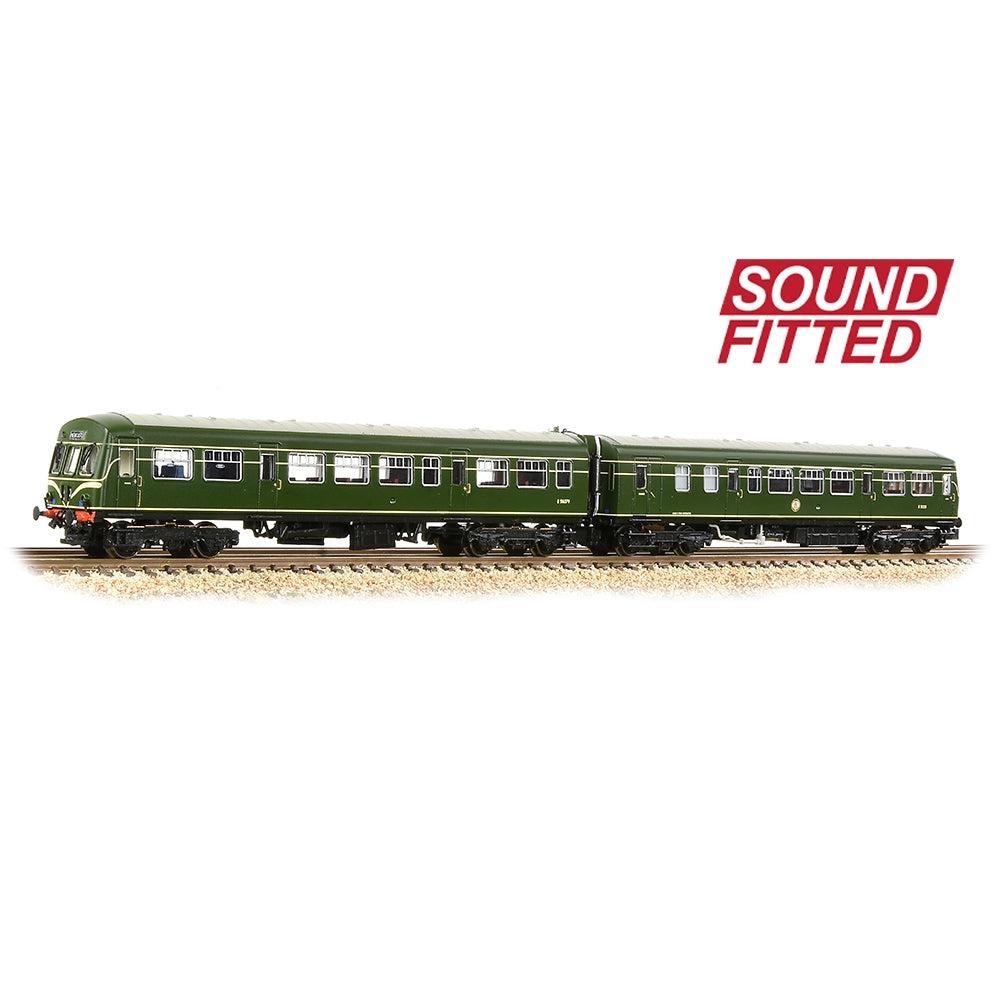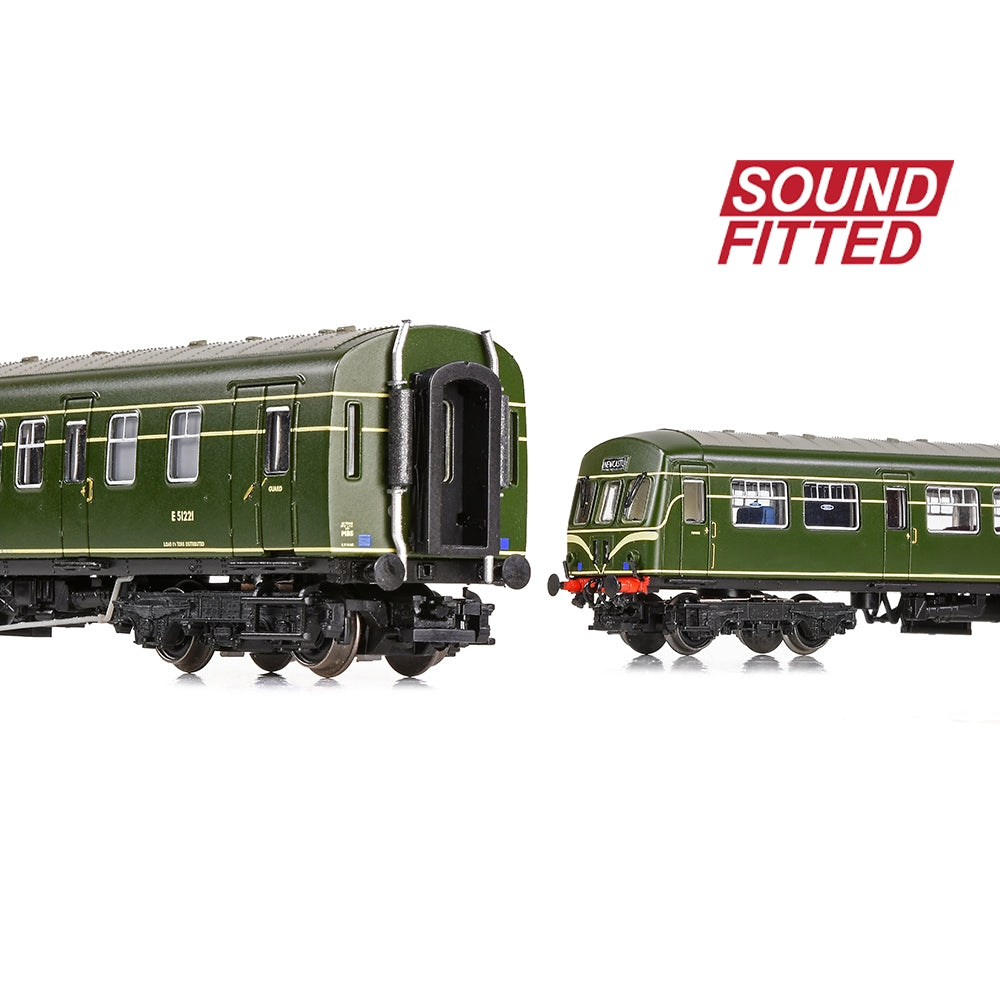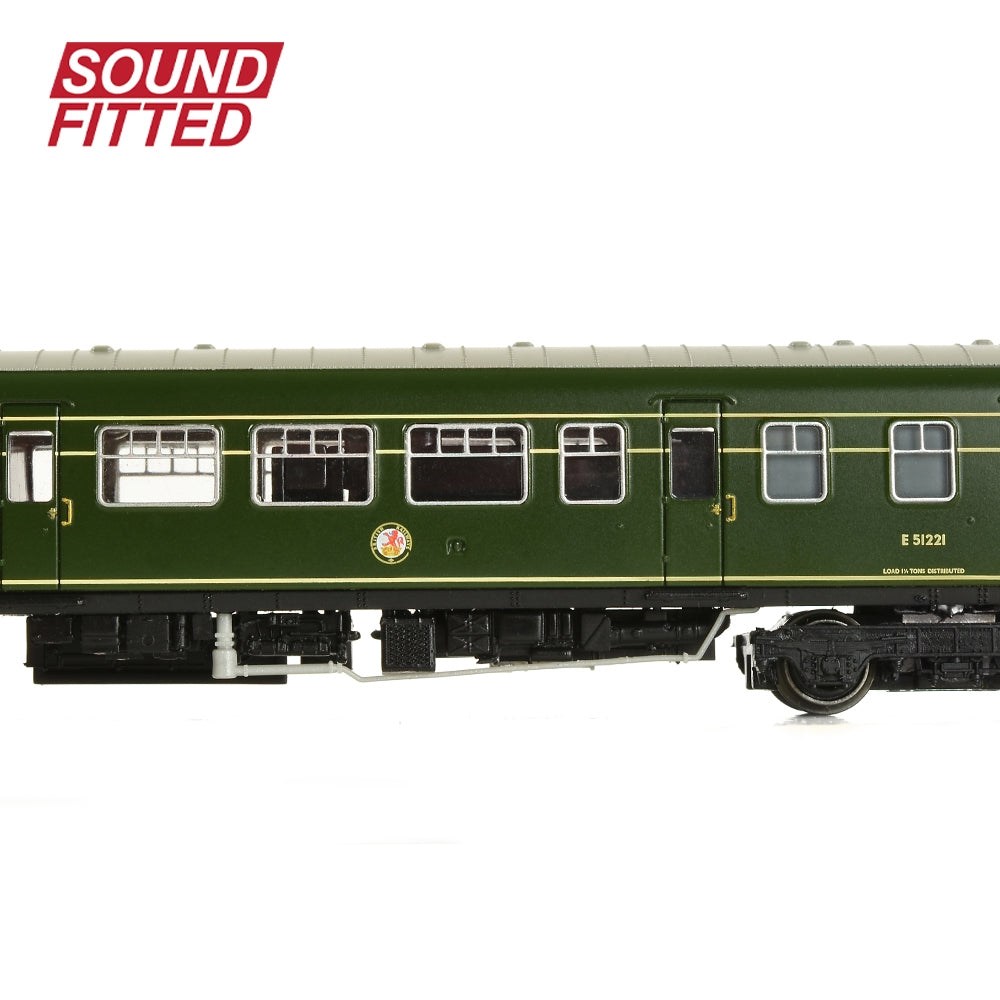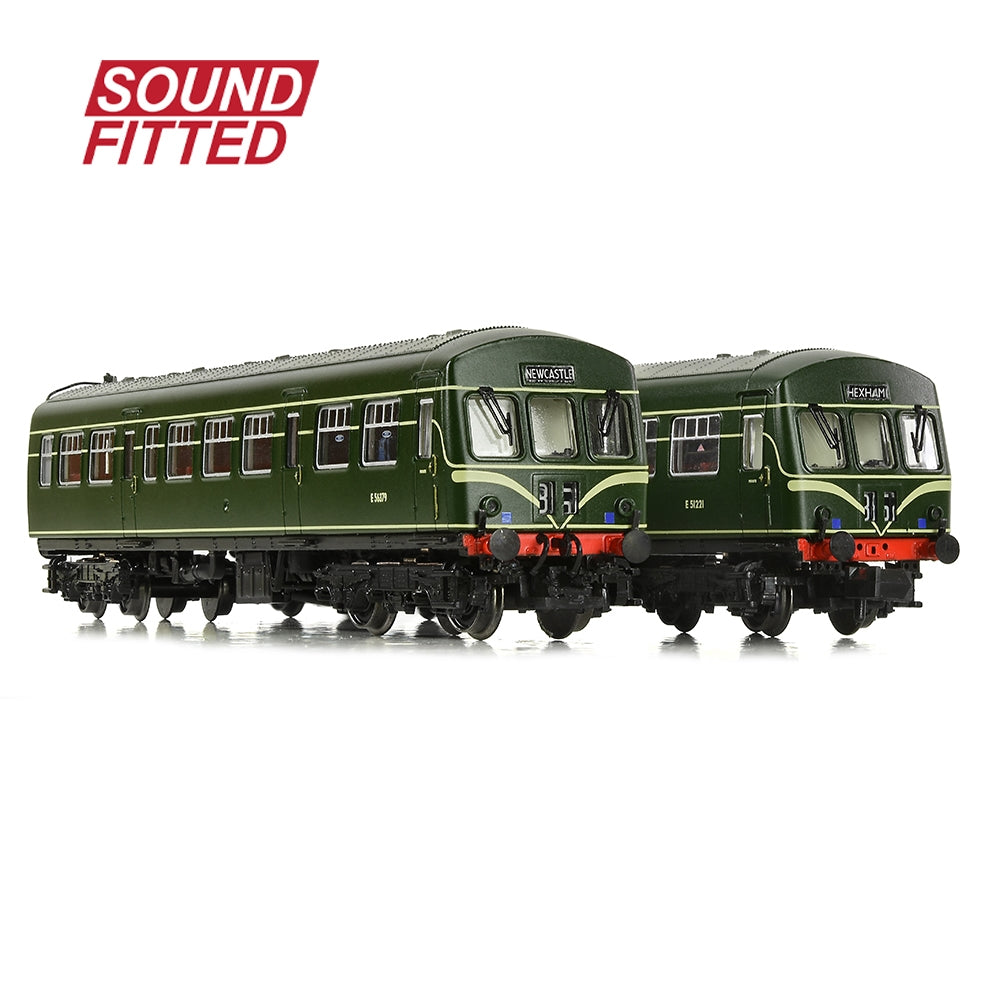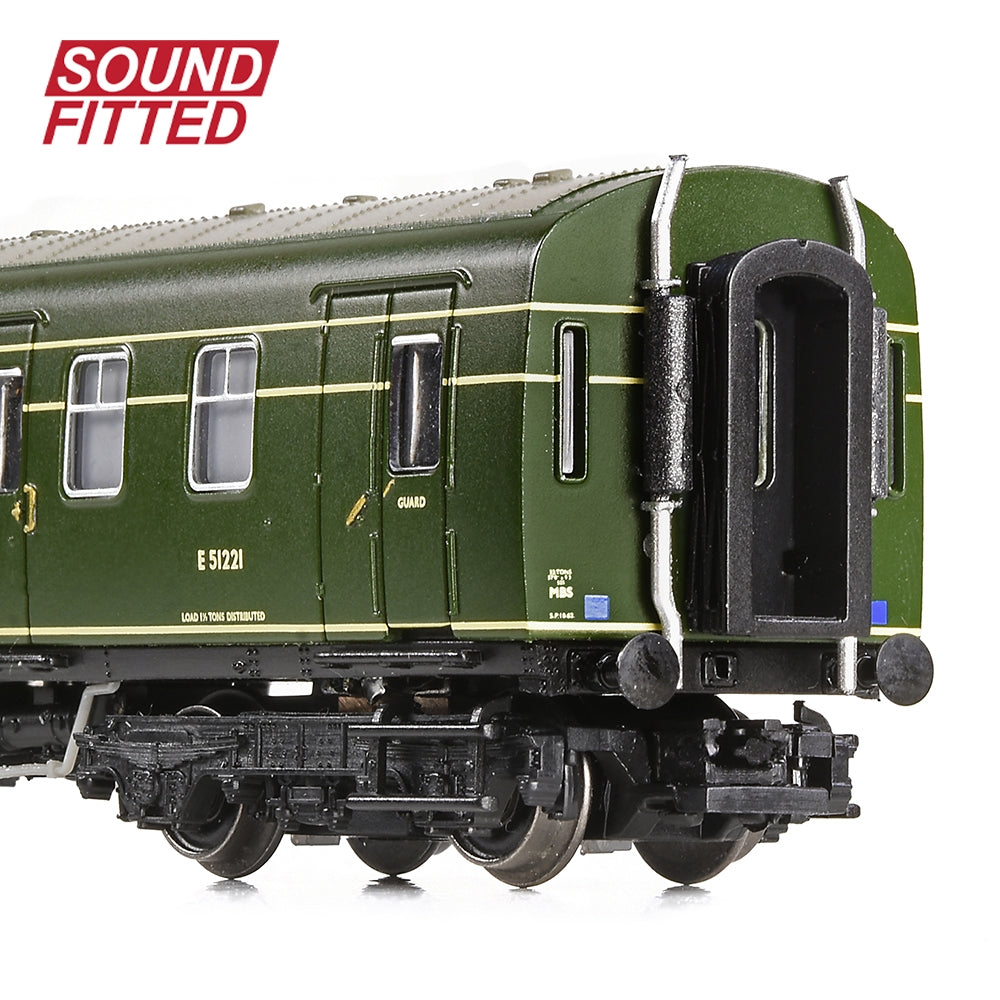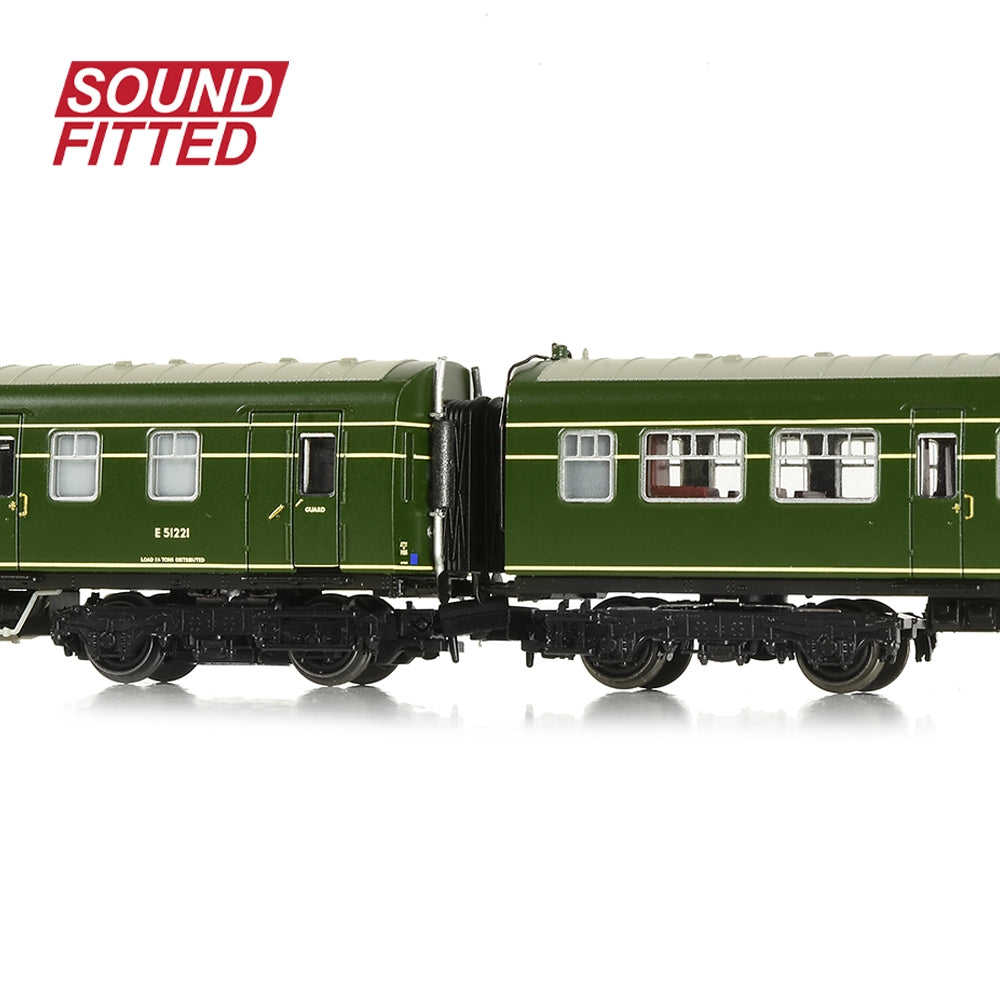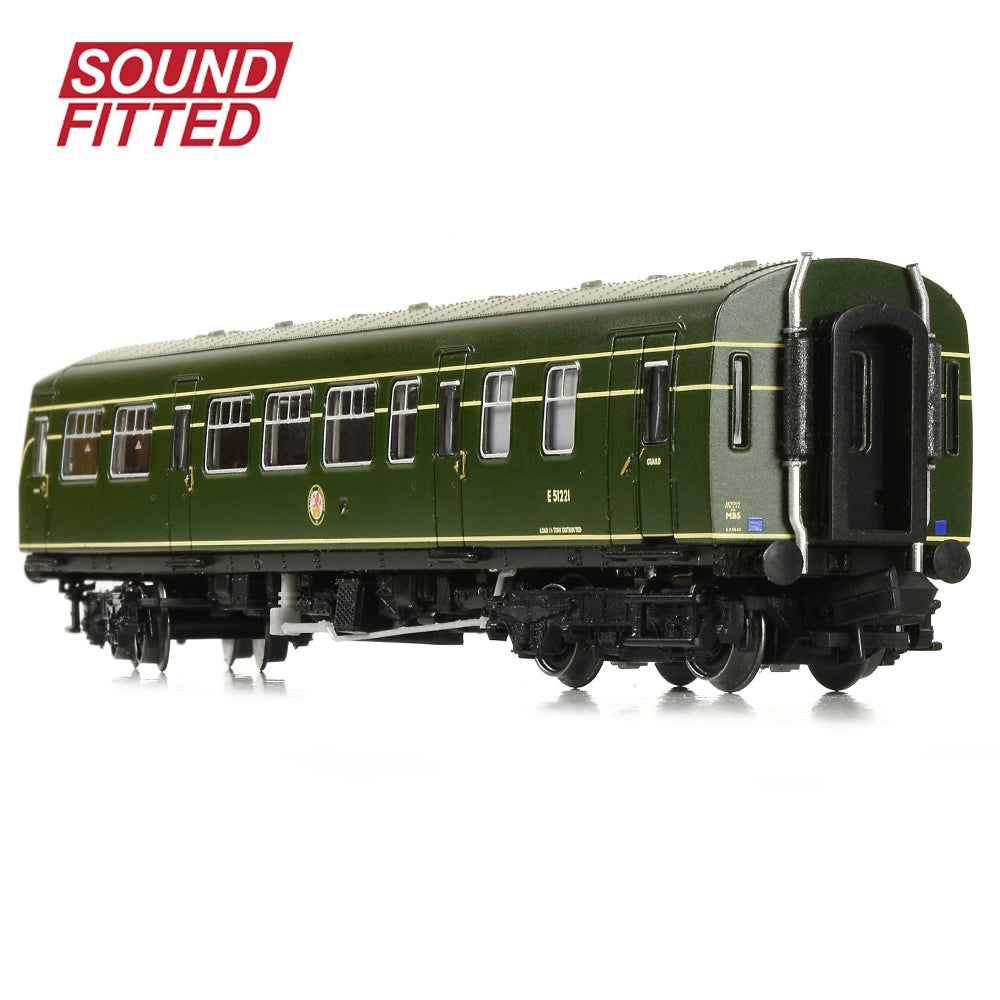GRAHAM FARISH N Class 101 2-Car DMU BR Green (Speed Whiskers) DCC Sound Fitted GRAHAM FARISH
$ 498,99 $ 149,70
GRAHAM FARISH N CLASS 101 2-CAR DMU BR GREEN (SPEED WHISKERS) SOUND FITTED
As part of the Winter 2021 British Railway Announcements, Bachmann are thrilled to offer this Graham Farish model of the iconic Class 101 DMU in BR Green livery with Speed Whiskers, complete with SOUND FITTED.
Our model of the Class 101 two car Diesel Multiple Unit (DMU) captures the character of these first generation DMUs to a tee. Featuring detailed bodywork and interiors, the bogies have been finely rendered and all of the chassis-mounted equipment is present and correct too. The exquisite livery application is the icing on the cake for this N scale model, with the verdant paintwork enhanced by the silver window frames and cream lining and ‘speed whiskers’ – a livery synonymous with these early multiple units. Mechanically, the model is driven by a three pole motor with flywheel and directional lighting is fitted to both vehicles – for ultimate realism this model is also SOUND FITTED!
MODEL FEATURES:
- Graham Farish N Scale
- Era 5
- Pristine BR Green livery with Speed Whiskers
- Comprises Car Nos. E51221 (DMBS) + E563379 (DTCL)
- Destination blinds for Hexham and Newcastle
- Accessory Pack
- NEM Coupling Pockets
- Powerful 3 Pole Motor with Flywheel
- Interior Detailing
- Directional Lighting
- SOUND FITTED – Fitted with a Zimo MX649N DDC Sound Decoder (plus a Zimo MX671N DCC decoder in the trailer vehicle) – See below for the function list
- Length 280mm
SOUNDS
F0 – Lights – On/Off
F1 – On – Engine Start Up / Off – Engine Shut Down
F2 – Brake
F3 – Single Horn (Speed Related)
F4 – Two-Tone Horns (Speed Related)
F5 – Cold Start/Light Load
F6 – Engine Idle/Coasting
F7 – Flange Squeal (Speed Related)
F8 – Detonators (Speed Related)
F9 – Air Tank Drain Down
F10 – Guard’s Whistle
F11 – On – Guard’s Buzzer / Off – Driver’s Response
F12 – On – Guard’s Double Buzzer / Off – Driver’s Response
F13 – On – Driver’s Window Opening / Off – Driver’s Window Closing
F14 – On – Driver’s Door Opening / Off – Driver’s Door Closing
F15 – Passenger Door Slamming
F16 – On – Passenger Door Droplight Opens, then Door Opens / Off – Passenger Door Closes, then Droplight Closes
F17 – Windscreen Wipers
F18 – Fade All Sounds
F19 – Hand Brake
F20 – Power Car – Directional Lights Off
F21 – Trailer Car – Directional Lights Off
F22 – Rail Clack Sound Off
F23 – Compressor Speed Up
F27 – Volume Down
F28 – Volume Up
Analogue Users: Please note that normal load running sounds and any other automatic or randomised sounds will also operate when this model is used on analogue control (DC) straight from the box!
CLASS 101 DMU HISTORY
The Class 101 Diesel Multiple Unit (DMU) was one of the most numerous and widely used types of all the first generation DMUs. Typically formed into two-, three- or four-car sets, the first examples were introduced in 1956 and more than 600 vehicles, including driving vehicles fitted with a cab at one end and corridor gangway at the other, and intermediate cars with corridor gangways at both ends, were built by Metropolitan Cammell at Washwood Heath in Birmingham. Construction continued until 1959.
Initially allocated to the North Eastern, London Midland and Scottish Regions, the units later saw use on the Eastern and Western Regions, with occasional running into Southern Region territory too. Fitted with the Blue Square control system, the Class 101s could work in multiple with other 101s and numerous other DMUs when additional capacity was required.
During the 1970s BR embarked on a refurbishment programme to provide passengers with an improved travelling environment and the Class 101s were used as a testbed for these works which resulted in the majority of Class 101 vehicles being refurbished over a period of almost ten years.
In later years many sets were given an additional makeover to extend their passenger service life, whilst others found new roles carrying parcels, as route learning units and for sandite operations. Around thirty two-car units were still in traffic at the start of the 21st century making the Class 101 one of the final first generation DMUs to remain in revenue-earning service.
The type remains popular today, with more than forty vehicles being preserved and these can now be found operating on preserved railways around the UK.
Quick Shipping and Professional Packaging
Due to our long-term partnership in a long-standing partnership with UPS, FedEx, DHL and many other leading global carriers, we are able to offer an array of shipping options. Our warehouse staff are highly trained and will pack your products according to our precise and precise specifications. Your items will undergo a thorough inspection and be securely secured prior to being delivered. We ship to thousands clients each day across multiple countries. This is an indication of our dedication to being the biggest online retailer in the world. The warehouses are located in Europe as much as they are in the USA.
Note: Orders that include more than one item are assigned a processing time in accordance with the item.
Prior to shipment before shipping, we'll inspect thoroughly the items you've ordered. The majority of orders are shipped within 48 hrs. The time to deliver varies from 3-7 days.
Returns
We don't manage the stock in our warehouse and factory. Stocks are subject to change at any moment. You may not receive your order after the order has been made.
Our policy is for 30 days. If you have passed 30 days by since your purchase, unfortunately we can't offer you a refund or exchange.
The item cannot be used and in its original condition. It should also be in the original packaging.
Related products
RADIO CONTROL
RADIO CONTROL
RADIO CONTROL
RADIO CONTROL
RADIO CONTROL
(Clearance Item) HB RACING 5 Cell Main Chassis 2.5mm with Battery Tray (Cyclone) HB RACING
RADIO CONTROL
RADIO CONTROL
RADIO CONTROL
RADIO CONTROL
RADIO CONTROL
